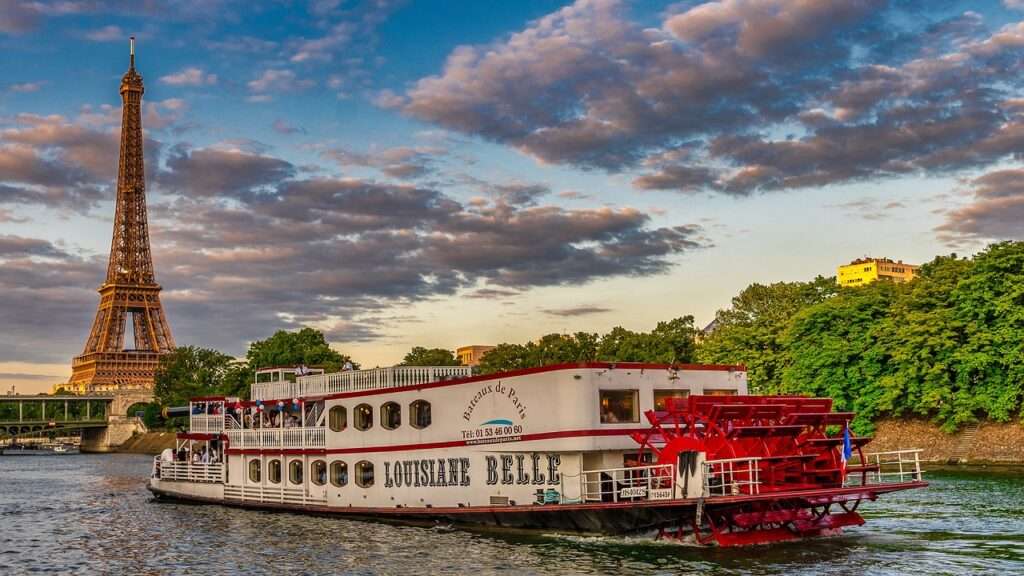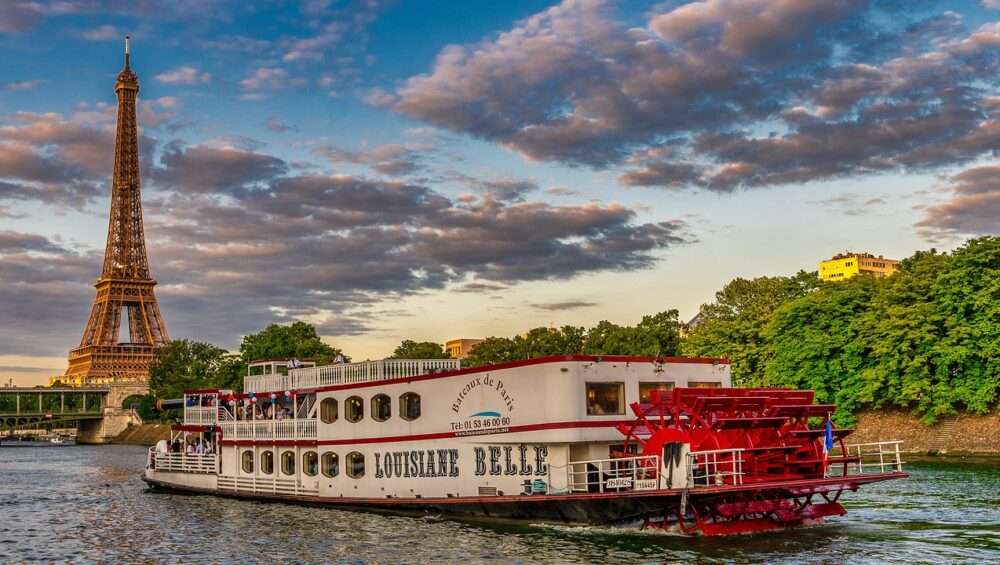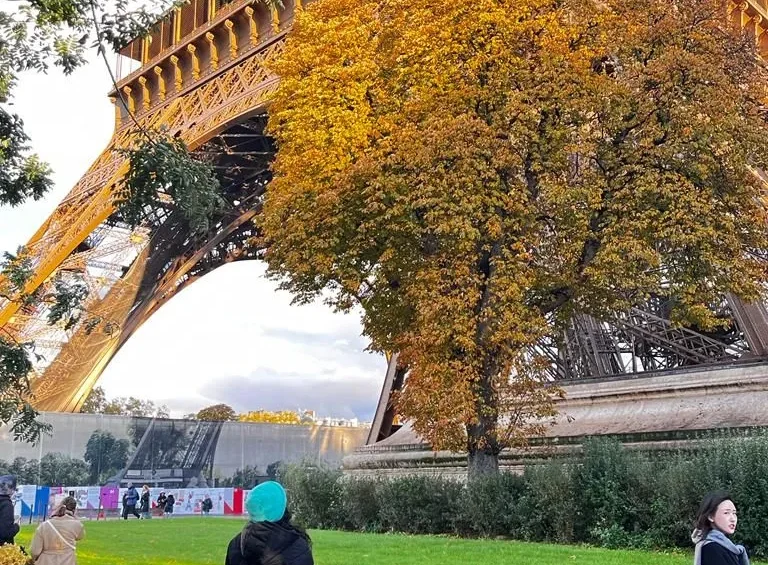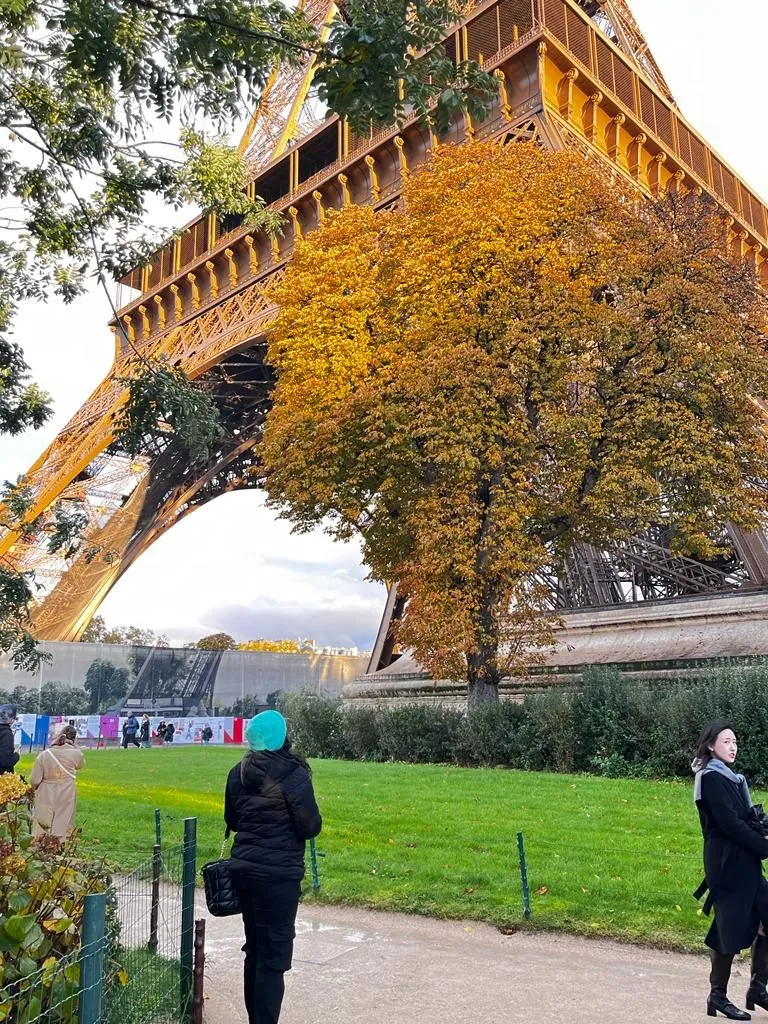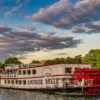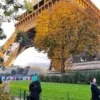Hello dear adventurer! Are you caught between embarking on a solo quest to the Eiffel Tower and going in the company of a Guide?
Here is a perfect read to help you make that all-important decision;
First of all, accessing the Eiffel Tower by public transportation means that you can use the metro (subway), the bus or the train. You can take three routes to the Eiffel Tower by metro. Take Line 9 (yellow), and alight at the Trocadéro Station (10 mins). You can also take Line 6 (green) to Bir-Hakeim Station (8 mins) or Line 8 (purple) to the École-Militaire Station (14 mins). From each of these stations, you can simply walk to the Eiffel Tower.
You can reach the Eiffel Tower by traveling on Buses 82, 30, 42, 86, 69, or 72. Lines 82 and 30 will take you to the Eiffel Tower stop (4 mins), while 42 will take you to Tour Eiffel (5 mins), 69 and 86 takes you to Champ de Mars (6 mins) and 72 will take you to Eiffel Tower stop (15 mins). From any of these stops, you can walk to get to the Eiffel Tower.
By train, you can travel to the Eiffel Tower on line C of the RER. You can get off at the Champ de Mars station. From here, it’s a 6-minute walk to the Eiffel Tower.
Now, when you arrive close to the Eiffel Tower, you’ll see a magnificent structure reaching up towards the sky, you can’t miss it.
The esplanade on the ground floor of the Eiffel Tower features two entrances for accessing the tower: the East and South Entrances. Upon entering through either of these entrances, you will pass through security doors. One of these doors is used to enter the ground floor, where you are required to place your bags in the provided trays and walk through the scanner, ensuring that you do not carry any metallic objects or phones with you. The other door is used to gain entry to the floors of the tower, including the first, second, and third floors. Here, you will once again be required to place your bags in the trays and walk through the body scanner before continuing your ascent.
When deciding which entrance to use at the Eiffel Tower, it’s essential to consider whether you prefer to climb the stairs or take the elevator to the top. For individuals without children or any significant health concerns, we recommend using the South Entrance. This entrance offers the unique opportunity to ascend to the second level via stairs and then take the elevator to the summit. However, if you prefer to avoid crowds, the East entrance may be a better choice. This entrance tends to be less crowded than the other entrances, making it an excellent option for those who want to avoid long lines and enjoy a more peaceful experience. Ultimately, the choice of entrance depends on personal preference and circumstances.
For solo travelers, the Eiffel Tower offers two ways to get to the floors of the Tower: climbing the stairs or taking the elevators. Visitors have the option to purchase prepaid tickets or buy them on-site, although it should be noted that purchasing tickets at the tower can result in long lines. To make the experience less of a work, some tour companies offer guided tours that accompany travelers during the long lines. These tours not only provide good company but also help the time pass more quickly.
After obtaining your tickets, you’ll proceed to the second security check, where the security personnel will guide you to the front of the elevators. These elevators will transport you and other visitors to the second floor. If you’re headed to the third floor, you can switch to a different elevator on the second floor. Visitors are advised to quickly make their way to the third floor to fully enjoy the view and then return to the second floor to take in the stunning cityscape. The second floor offers the best view of the city, and you’re free to spend as much time as you’d like exploring the tower until it closes.
We wish you a wonderful solo adventure on the Eiffel Tower!
What then changes with a Guided Tour?
During a guided tour of the Eiffel Tower, guests are given a meeting point where you would be welcomed by a tour host/coordinator. . Your tour host will be identifiable by a distinctive item, such as a cap, sign, badge, or flag, depending on the specific company. This identification kit is designed to help guests locate their tour host in a crowded area. A lot of companies that operate around the Eiffel Tower make the meeting point close to the Eiffel tower their choice meeting point for their proximity to the tower, making it easy for guests to find their way. Meeting points close to the tower also means that the guests should not expect to see a building as standard practice is to find your tour host/coordinator by their identification kit.
After connecting with your tour host, you and your fellow travelers (in case of a group guided tour) will be warmly welcomed and checked in. Your tour host will provide you with all the necessary information and prepare you for your tour of the Eiffel Tower. This type of tour is perfect for budget-conscious travelers who want to explore a new city with the help of a local guide. While you could certainly explore the city on your own, as a tourist, it’s beneficial to have someone to orientate you, accompany you, and provide you with valuable information about the city. A guide will then be assigned to you who will lead you to the Eiffel Tower, where you’ll embark on an unforgettable experience.
As you pass through the initial security check, your guide will make sure everyone in the group is aware of the process and what is expected of them. Once you arrive at the base of the Eiffel Tower, your guide will share fascinating stories about the tower and other notable landmarks in Paris. They will also provide helpful tips for navigating the ticket purchasing process and offer suggestions for places to visit and things to do while in the city.
Your guide will accompany you throughout the tour, including while waiting in line for tickets. They will keep the group entertained and engaged, making the wait feel much shorter. Once tickets have been distributed, your guide will continue the journey with you, leading you through the second security check and onto the elevators. They will remind everyone of the proper procedures and ensure that everyone is doing well.
Once you reach the second floor, your guide will take you to the best viewing spots, where you can take in the breathtaking views of the city. They will answer any questions you may have and provide additional insights into the landmarks you can see from these vantage points. Your guide will also escort anyone who wishes to continue to the summit, helping them find their way and ensuring they have a safe and enjoyable experience.
Think of your guide as a walking encyclopedia, but with a fun and engaging personality that will make your tour experience truly unforgettable!
Guides can adapt the tour to your interests and needs. They can focus on specific aspects of the Eiffel Tower that interest you, whether it’s its architectural design, history, or photography opportunities. They can also suggest additional activities or nearby attractions to enhance your overall experience in Paris.
Navigating a crowded tourist attraction like the Eiffel Tower can sometimes be overwhelming. Having a guide ensures you have someone knowledgeable by your side who can navigate through the crowds, manage any unexpected situations, and provide a sense of security throughout your visit.
Guides often have a deep understanding of the local culture, traditions, and hidden gems in the area. They can offer recommendations for authentic dining experiences, nearby landmarks to explore, or lesser-known attractions to visit after your tour. Their local insights can help you discover the true essence of Paris.
With a guide by your side, you’ll have a memorable and worry-free adventure at the Eiffel Tower. They’ll make everything seamless and enjoyable, keeping you informed and entertained throughout the tour.
Experience the ultimate advantages of a guided tour with our Eiffel Tower Guided Tours. Simply visit our website, book your tour, and unlock a world of knowledge and convenience.
So, get ready to have an incredible time with our guides and create unforgettable memories at the Eiffel Tower!
